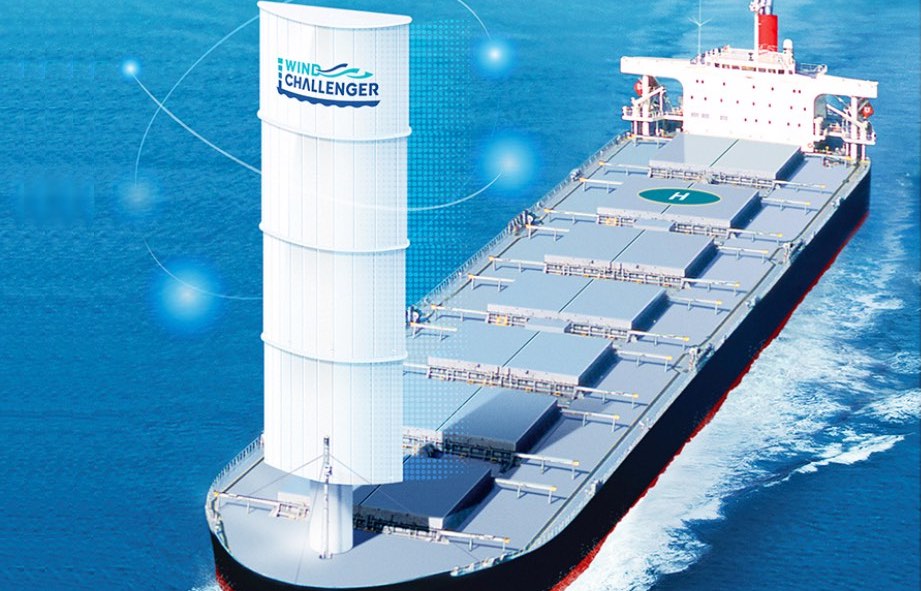The construction forms part of the company’s Wind Hunter programme, which seeks new applications for hydrogen fuel and wind power.
The project intends to use MOL’s rigid, collapsible sail technology developed under the Wind Challenger project on vessels capable of capturing that power during high wind periods to generate hydrogen for use during lower wind sections of the voyage.
Namely, the zero-emission seagoing cargo ship, with a total length of 60 to 70 metres, would not need to refuel as it would use wind assisted-propulsion when there are strong winds in combination with hydrogen produced onboard to sail.
Underwater turbines spinning in the water would generate electricity that would be used to electrolyze pure water made from seawater and generate hydrogen. The hydrogen would then be stored in a tank in the form of liquid methylcyclohexane (MCH), which can be safely and economically stored and transported.
When the wind is weak, the ship would use the stored hydrogen to power a fuel cell delivering electricity, which would then power electric propellers that drive the ship forward. The ship is planned to sail autonomously, without crew onboard, with the latest digital technology enabling it to be monitored and operated remotely. The vessel would also be fitted with route navigation technology to find the best wind conditions and optimise the ship’s course.
“By 2030, we expect to construct a large zero-emissions hydrogen-producing cargo ship. There are still many challenges to be solved but taking on challenges is what we do at Mitsui OSK Lines, and this is a journey that will chart a direct route to the future,” MOL said.
MOL has already completed demonstration testing with a yacht in Omura Bay, Nagasaki Prefecture. The zero-emission vessel powered by wind and hydrogen, a part of the Wind Hunter project, successfully measured real-time and 3D wind conditions within a 15-km radius while underway.
The participants include Ouchi Ocean Consultant, the National Maritime Research Institute (NMRI) of National Institute of Maritime, Port and Aviation Technology (MPAT), Smart Design Co., Graduate School of Frontier Sciences of The University of Tokyo, West Japan Fluid Engineering Laboratory Co., Nippon Kaiji Kyokai (ClassNK), and Miraihene Planning.
Source: SeaTrade Maritime





